The Power of Metaphor in Stuttering Therapy
 |
About the presenter: Luc Tielens graduated in Logopedie and Audiologie in Antwerp (1982) and received licensure in de Logopedie en Audiologie at the Catholic University of Leuven (1985) (Master in speech and language). Followed a lot of courses about stuttering and all the world conferences of IFA (Munich, San Francisco, Nyborg). I have a private "stuttering center" in Herent near Leuven with 6 colleages. I work at the university of Leuven in the department of speech therapy: giving the practical courses in stuttering therapy, complementary to the courses of Prof. DeNil. I also work in a school with autistic adolescents. I like to make and play my own music. |
The Power Of Metaphor In Stuttering Therapy
by Luc Tielens
from Belgium
"What one should do when meeting someone who stutters?" is a very common question. It is one of the first questions raised in a conversation about stuttering with laymen. Possible answers might be: "Do not look away"; "Do not interrupt the person who stutters" or "Do not finish his words". But are those the right answers?
If you consult people who stutter, their answers will differ depending on how they manage themselves, how severely they stutter, what their opinion is about stuttering ...
What should teachers do when they have a pupil/student who stutters? In my experience most teachers do not recognize students who stutter. Many teachers will claim they have never had any child who stutters in class.
"It is more important to inform the teacher of stuttering than to instruct him," a 10-year-old said. He understood that actions are guided by thoughts. Most people do not realize that fighting stuttering or trying not to stutter is the worst thing one can do. Stuttering is like being bogged down in a swamp: the harder you struggle, the deeper you sink into the mud.

In therapy sessions we try to convince our clients of this view by using metaphors. The question about what one should know in order to really understand stuttering, though very relevant, is not an easy one to answer.
Gaining a clear understanding of the process of stuttering enables one to handle stuttering and to react appropriately. Feeling uncomfortable about stuttering mainly results from not knowing.
It is very important to teach the client (even the youngest one) a maximum understanding of what stuttering means in all its aspects. It prevents common misconceptions.
However it is not always easy to give the client a good understanding of what you really mean. Using symbols/metaphors can be a helpful aid in this matter. Albert BANDURA (1986) in his social cognitive theory regards symbolizing as a fundamental human capability. He also states that symbols serve as the vehicle of thought. By symbolizing their experience, people give structure, meaning, and continuity to their lives. "Specifically, practitioners use metaphors to facilitate the processes of developing a client-consultant relationship, gathering information, assessing and utilizing resources, suggesting ideas, reframing, and, facilitating new patterns of thought, feelings, and behavior" (COMBS & FREEDMAN, 1990).
Using metaphors:
- is much stronger than 'just explaining'
- combines thoughts, feelings and behaviour to one meaningful entity: this unique combination expresses more than the sum of the separate parts
- is indirect and therefore less threatening
- gives others the opportunity to understand intuitively what you really mean.
- is simply more attractive
Using metaphors is a strong medium in stuttering therapy:
- Metaphors can explain what you really mean as a therapist
an example: it's not easy to explain to people why PWS have to stutter on purpose to get control over their speech.
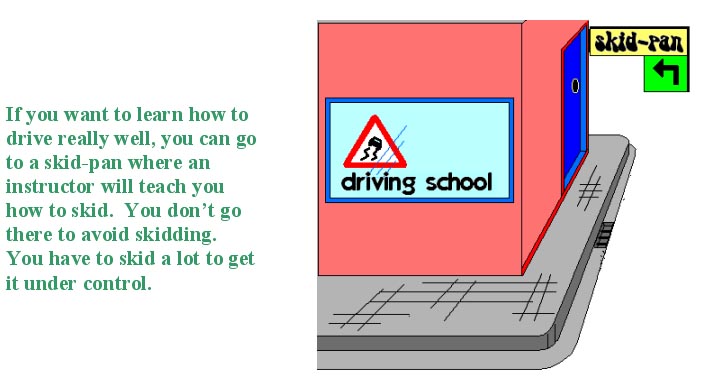
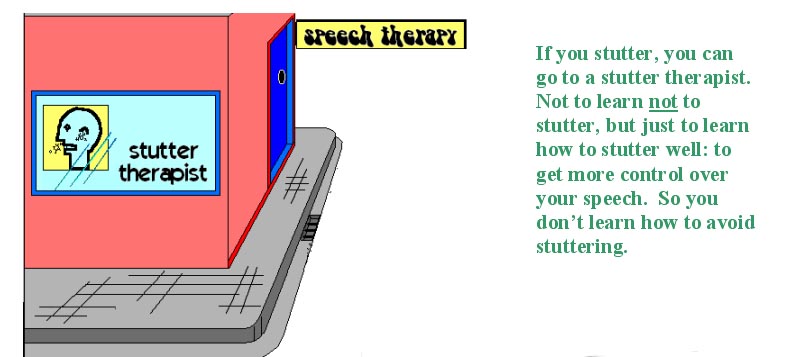
- Metaphors can help the client explain what he really means:
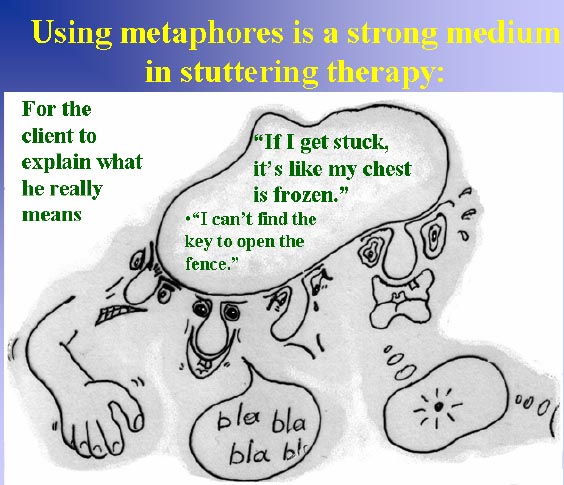
- Metaphors can serve as a mental support for the feeling of control:
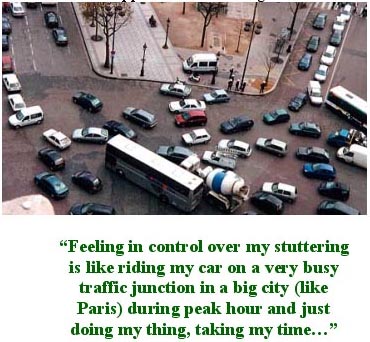
- Metaphors may function as a mental support to trigger the feeling of control or to clearify other processes in therapy in other stuttering clients.
Some examples:
The beetle and the centipede:
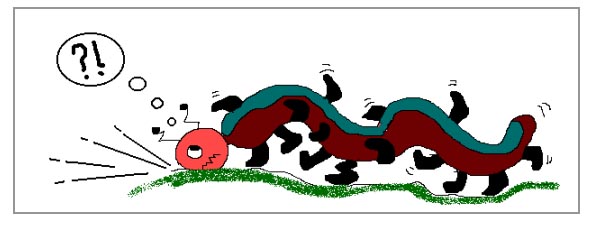
In a famous fable the beetle asks the centipede how he manages to move so graciously and perfectly with so many legs. The centipede thinks it over and from that moment on he can't get one foot before the other.
Children's own fantasies
A major argument for not starting therapy with young children, mostly put forward by their parents, is: 'His stuttering doesn't worry him'. In fact, what they are suggesting is: 'If we start with therapy, our child will become more conscious of his stuttering and start worrying'. We try to convince these parents that, by waiting, their child will create his own concept of stuttering by using the information he gets from his environment and from his own fantasies. Why not put him at ease by telling him what stuttering really is about and how it works. We use the word 'stuttering' even with very small children. Why not? It would only be harmful if we used it in a negative sense. Avoidance of the word 'stuttering' automatically results in the word taking a negative value. The way parents think and feel about stuttering is not only influenced by their knowledge but also by the way the child itself manages the 'problem'.
Metaphors
Using metaphors is a very strong medium to make things clear. But it has, undoubtedly, also disadvantages: every comparison necessarily distorts or simplifies reality. Nevertheless it is a useful vehicle to convey specific ideas. If you share a metaphor you have a common understanding. Apart from those children who have difficulty understanding figurative speech, children respond positively to the use of metaphors. It enables them to explain things and at the same time, to put across their feelings. After a while it can even become a way of communicating for them about problems such as stuttering.
Children have created some of their own metaphors of stuttering in the following
Mosaic of Metaphors.
with acknowledgement to Sheree Reese, Luc Tielens, Adriana DiGrande, Anders Lundberg, Lee Caggiano, and all the children who shared their metaphors and analogies to help others learn about stuttering
Click on several of the items below for a larger version.
 The text on it says "I feel like a rocket blasting into the moon and being bumped." Harry age 4 years |
A movie about Sander's "Stutter House" a Lego creation Click here to open pictures from the movie.  |
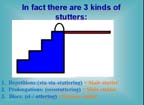 From Belgium a short powerpoint of stuttering |
Stuttering is like |
 DH, age 8 says that stuttering is like a car getting stuck in water. |
|
Sometimes stuttering is like a gift.  |
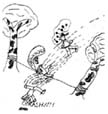 A 9 year old from Sweden says Stuttering is like a wire that trips him up |
a clothespin on his tongue 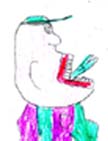 |
 Corey wrote a poem |
Stuttering is like a broken record 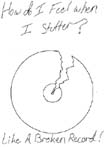 |
References
Bandura, Albert (1986)
Combs, Gene, & Freedman, Jill (1990). Symbol, story, and ceremony. Using metaphor in individual and family therapy. New York: W.W. Norton & Company
September 2, 2004

